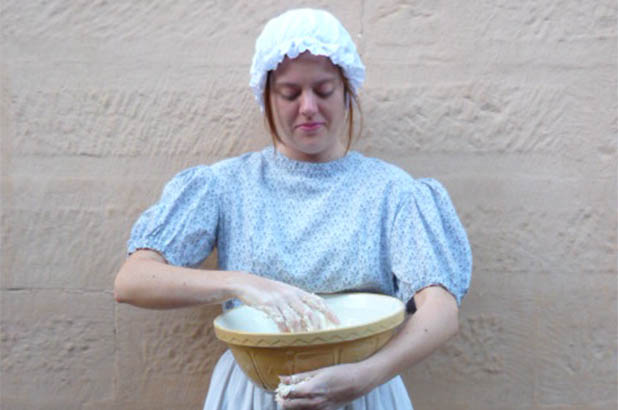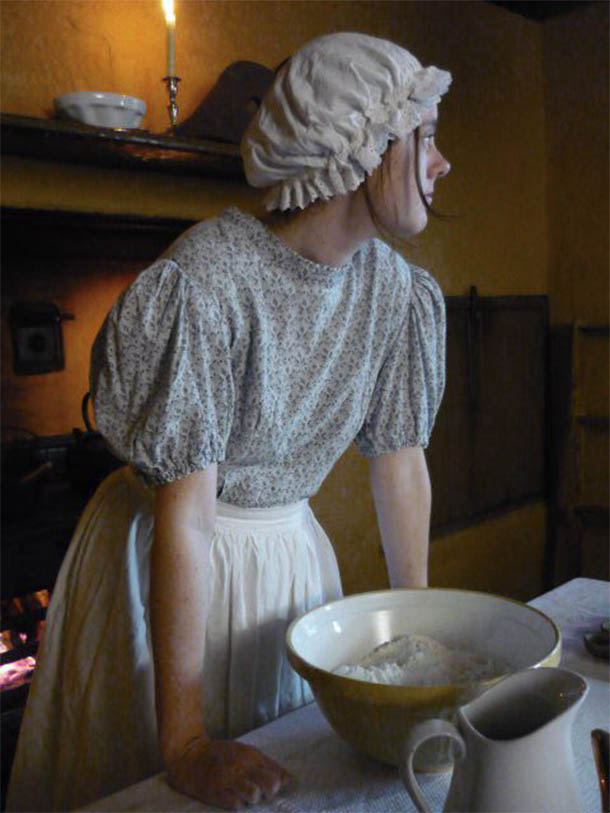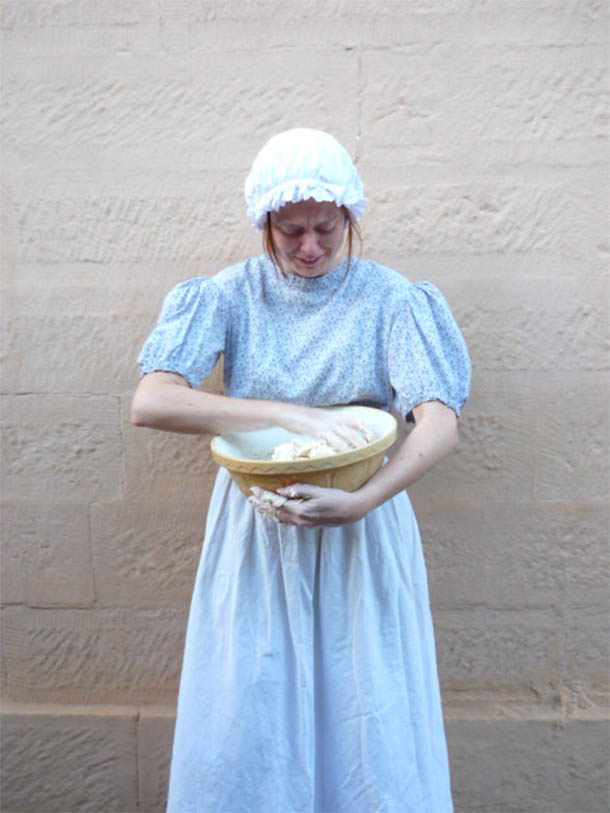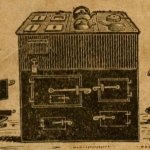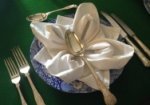Getting into convict wear and kneading dough for a (very) early start last week gave us the opportunity to road test one of Isabella Beeton’s more obscure pieces of advice.
Isabella Beeton’s Household Management guides were intended principally for households in urban centres, where regular grocery deliveries were assured. Her 1842 (1st Edition) Household Management for Colonial Families however contained tips for those in more out of the way places, such as the Australian ‘out-the-back’, as she amusingly mis-named it, where supplies could be harder to come by. Home-made salt was one:
…Should you run out of common salt, the lachrymations of your convict staff will be found a suitable substitute when mixing dough for bread.
Isabella Beeton, Household Management for Colonial Families (London, 1845, 2nd edition. Rouse Hill Collection)
Ever helpful, Anna Corkhill, the assistant curator at Elizabeth Farm, was willing to give this a go. Imagining herself as a scullery maid with six years remaining on her sentence after stealing a stocking, she provided enough tears (or ‘lacrimations’) to make a working estimate.
It took some number crunching and guesswork, but we think these are the quantities: a decent sized tear is about 1/4 ml, and contains around 10% salt (sodium chloride), along with various proteins, hormones, enzymes etc. This can vary considerably, given the range of sizes and types of tears (are they basal tears, irritant tears, ‘happy’ or ‘sad’ tears), the capacity of an individual’s tear ducts, level of dehydration and so on. Anna managed to produce an average of around 20 tears a minute – admittedly she kept giggling which wasn’t helping the experiment. A miserable scullery maid being kicked about or scolded could easily produce more but I have to keep working with Anna so would prefer to maintain an ethical workplace. So that makes 5 mls per minute. Over 30 minutes of protracted sobbing, and assuming she was fully hydrated, Anna could churn out 150 mls, or a quarter of a pint!
Having harvested the tears – this is not as difficult as you might think, collecting tears is a very old tradition: “put thou my tears into thy bottle” says Psalms 56:8 [King James vsn.], the Romans collected tears in lachrymatories, or ‘tear vases’, and the custom was revived in the 19th century – and evaporating the moisture, that leaves us with around 15 ‘milliliters-worth’ of salts – which is just short of 8 grams.
A recipe for bread as given in Beeton uses around a tablespoon – or 15 grams – of salt. So if Anna kept going for an hour we could make our standard loaf!
All up, we can’t really see Beeton’s advice ever providing domestic quantities unless the whole staff of a large house were sitting about wailing uncontrollably for days on end – and given that the Macarthurs were known for being rather considerate of their household staff it would indicate this is why John Macarthur turned to salt production by evaporating seawater on his harbourside land at Pyrmont. Perhaps Eliza Macleay of Elizabeth Bay House, who had a reputation as ‘the harshest mistress in the colony’, may have had more success.
Maybe Beeton meant this as a household tip for days with heavy onion chopping – which also suggests that tears could provide subtle flavoring for savoury breads and rolls.
Let us know if you have any success.
